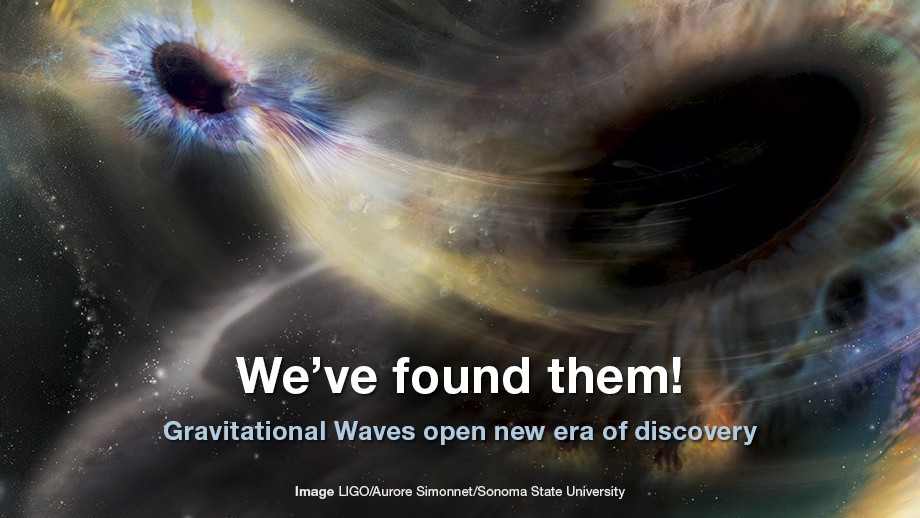ANU plays a key role in discovery of gravitational waves
ANU scientists are part of a global scientific collaboration which has proven the existence of gravitational waves for the first time, 100 years after their existence was predicted by Albert Einstein's General Theory of Relativity.
The confirmed observation of a gravitational wave, ripples in space caused by the collision of two black holes, is a major discovery and opens up new fields in physics and astrophysics. It will give scientists a new way to study the universe, black holes, dark matter and gravity.
More than 1,000 scientists around the world have been involved in the research, including a collaboration of Australian universities through the Australian Consortium for Interferometric Gravitational Astronomy (ACIGA), led by ANU Professor David McClelland.
"For the first time, we've been able to observe a gravitational wave, created 1.3 billion years ago by the collision of two massive black holes," said Professor McClelland, from the ANU Research School of Physics and Engineering (RSPE).
"This observation confirms that gravitational waves do exist. It is a moment that will be remembered for a thousand years."
Other Australian partners in ACIGA are the University of Adelaide, the University of Western Australia (UWA), The University of Melbourne, Monash University and Charles Sturt University.
The gravitational waves were detected by the twin detectors of the Laser Interferometer Gravitational-wave Observatory (LIGO) in the United States, in Louisiana and in Washington state.
The gravitational waves were produced during the final fraction of a second of the merger of two black holes to produce a single, more massive spinning black hole. The collision is the most violent event ever recorded in the universe.
Professor Susan Scott, who studies General Relativity at RSPE, said observing this black hole merger was an important test for Einstein's theory.
"It has passed with flying colours its first test in the strong gravity regime which is a major triumph," Professor Scott said.
"We now have at our disposal a tool to probe much further back into the universe than is possible with light, to its earliest epoch."
Australian scientists and industry are at the forefront of the discovery and are well placed to lead future research and development.
The ANU, UWA and University of Adelaide helped build crucial components of the LIGO detectors used to find the gravitational waves. Australian institutions were also heavily involved in analysing the data.
Already, spinoffs from the technology are being used and developed for commercial applications, such as the search for oil and gas and to measure groundwater from space.
The Australian government, through the Australian Research Council, has made significant contributions to the project.
ANU RESEARCH CONTRIBUTION
ANU designed, constructed, installed and commissioned a system that stabilises the system and locks the laser and mirrors to each other at the start of experiments. The system also pulls the system back into line if it is disturbed, for example by a magnitude 7 earthquake anywhere in the world.
ANU also built, installed and commissioned 30 small optics steering mirrors for routing the signal beam around the interferometer and into the detectors.
ANU searched LIGO data for gravitational waves from young supernova remnants and worked with the University's SkyMapper telescope to look for flashes of light associated with the first observation of gravitational waves.

